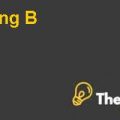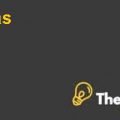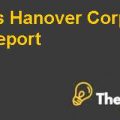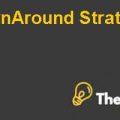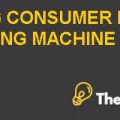
INTRODUCTION
Alfa was formed in early 1960’s as a manufacturer and seller of resins. The top priority of the company is to sell excellent quality products to its customers. This has led the company to earn the confidence and satisfaction of its valuable customers over the period of time by facilitating its customers with excellent quality products and exceptional customer care services. This has also helped the company to enhance its customer base and hence, become a trail-blazer in the entire industry by dominating over a huge share in the entire industry.
The company has over 300 extensively experienced and professionally skilled employees as well as the company also have a current turnover of approximately 200 million Euros. Moreover, the company has expanded drastically by operating in various offices all over the country. Furthermore, Alpha is also involved in providing specific and technical services to its clients, besides the main product line of Alpha.
SITUATIONAL ANALYSIS
The company is currently evaluating an opportunity of expansion of its business through acquiring a well reputed company Coller. Coller is a well renowned company, which has served its customers over a long period of time. The top management of Alpha has decided to acquire Coller in order to expand globally as well as in order to enhance their customer as well as product base. The main problem that the company is facing is that the company is unable to determine an optimal bid price which the company could pay in order to acquire it.
ANALYSIS
Weighted Average Cost of Capital
In exhibit, a comprehensive calculation has been made in order to calculate the Weighted Average Cost of Capital Rate. There are many factors that are taken into deep consideration in order to calculate the weighted average cost of capital rate. The financing structure of the company has also been taken in consideration, which shows that the company has financed 25% of its operation through debt financing and rest 75% of its operation through equity financing. This shows that the company has focused more on equity financing rather than debt financing, which is beneficial in the interest of the company.
Moreover, a thorough consideration is also applied to market risk premium rate as well as risk free rate of the company. The market risk free rate of the company is 4.58% whereas, the market risk premium rate of the company is 4.75%. By analyzing all the factors that could affect the calculation of WACC, the weighted average cost of capital rate is 6.5%.
EQUITY BETA
Equity beta has been calculated in appendix. In calculating equity beta of the company, the different asset beta of different companies has been taken into consideration. The asset betas of small companies are ignored because of their insignificance. The equity beta has been calculated by taking average of all the asset betas which are taken into consideration. The equity beta calculated is 0.54.
Moreover, ungeared cost of company has also been taken into consideration, for the calculation of equity beta.
Capital Asset Pricing Model (CAPM) has also been used in order to arrive at the geared cost of equity. Moreover, the cost of equity and equity beta as well as the risk free rate and market risk premium has also been included in the calculation of geared cost of equity. The geared cost of equity calculated, as shown in exhibit, is 7%.
CASH FLOW ANALYSIS
The cash flow analysis of Coller has been done in order to identify the optimal price for acquiring the Coller. The overall cash flow analysis of the company depicts an overall increasing trend in the cash flow of the company. This illustrates the potential of the company to make huge profits in the future as well as it also depicts that the company would gain high revenues in future which would subsequently enhance the overall profitability of the company.ALPHA Case Solution
Moreover, the increasing trend of receivables and payables of the company represents that the company’s lead time has been increased in receivables as well as in payables. Increase in receivables either shows the inability of the company to receive cash readily from its customers on time or may be the increase in receivables of the company is due to the increase in sales of the company. Increase in payables of the company shows that either the company has increased the lead time of payment to supplier with the consent of suppliers or the increase in payables is due to increase in the purchases of the company in future.........................
This is just a sample partial case solution. Please place the order on the website to order your own originally done case solution.

